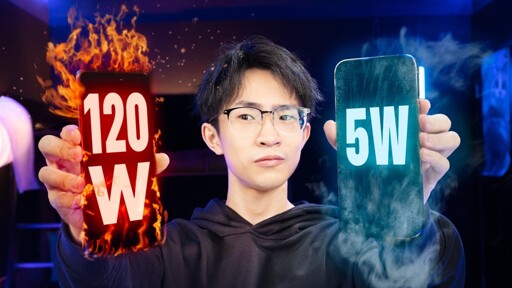TLDW; No
Basically the video is testing phones with varying charging speeds and how much battery degrades after 500 charging cycles. Also, the affects on performance after battery degradation at 5:37
Timestamps of some tests:
- Test results for different charging speeds at 3:06
- Storing batteries at 1%, 50%, 100% at 3:43
- Battery performance at 4:42
After 6 mins he talks about why the tests took 2yrs and how they did it 3 times.



He only checked battery health loss. Not the speed of capacity loss until 80%.
The end result, it does not matter. Use and charge your phone how you would like to. A few percentage for keeping the battery at 20-80% only to have a reduced capacity from the very start does not make sense.
Well. I mean that’s like THE most important thing. Charging at a higher C rate is going to cause increased wear on the battery and less life. That’s why most phones are limited in that way.
He did test Iqoo phones charging at 120W. And the wear was less than slow charging. So, that should answer your question. But, he did ask to comment any other tests people wanted.
You can drop one on this video if you want to.
That can’t be right. Either the result is not statistically significant, the methodology is bad, or the brand has a reserve capacity algorithm which doesn’t activate properly when slow charging.
Could it be because the phone spends less time in the charging state?
I don’t have a Google account, sorry
It makes sense to me IF it actually works.
Having extra capacity when a device is brand-new isn’t a huge boon, but having stable capacity over the long term would be. At least for me.
Of course this will depend on your habits. If you replace your phone every year, then it doesn’t matter. If you’re a light user and only go through a couple charge cycles per week, it’ll matter less than if you go through 1-2 cycles per day.
Personally I’m at around 1 cycle per day on my current phone, and after nearly 3 years (over 1000 charge cycles now) the battery life is shit — much worse than just 80% of its original battery life. Performance also suffers. With my last phone, I replaced the battery after 3 years and I was amazed at how much faster it was. I didn’t realize throttling was such a big problem.
I might replace my current battery, but it’s such a pain, and it costs more than my phone is realistically worth.
This is literally what a bunch of companies already do. In a Samsung flagship, if you measure the “full” unloaded battery voltage on day 1 vs day 1000 it will be about 0.2v higher after three years. This is a reserve capacity which they slowly give back over time to keep the perception of “day 1 capacity” through the first 5-10% of batter degradation.
Pixels do the opposite. They slowly reduce capacity and charging speeds as you go past 200 charge cycles.